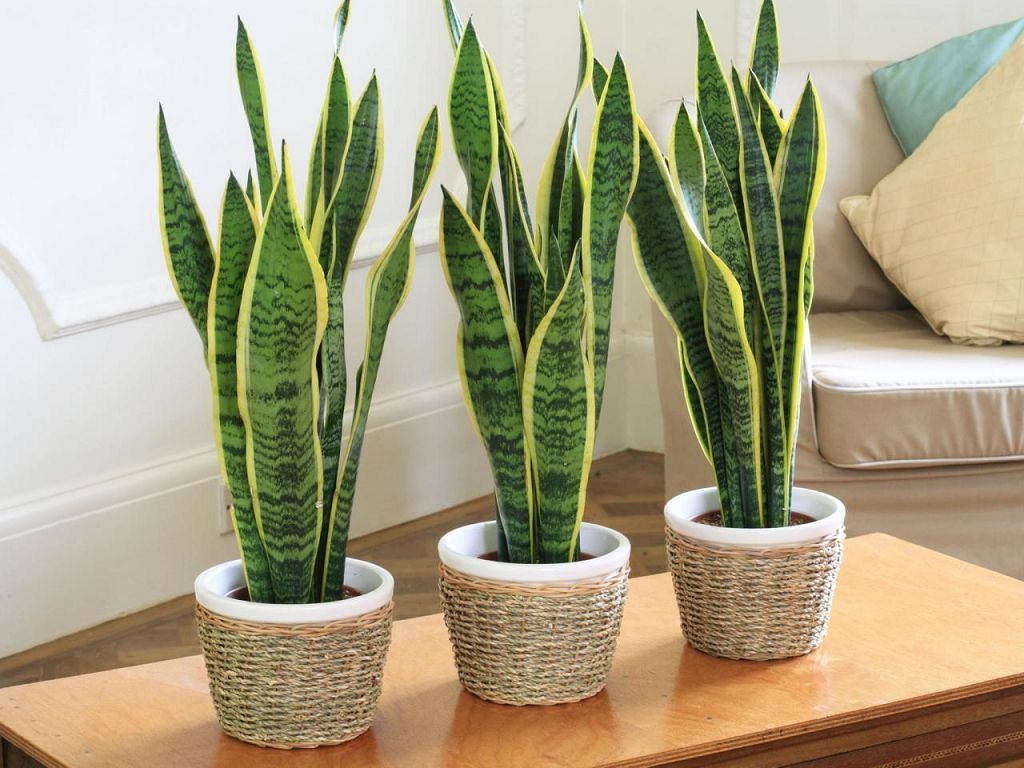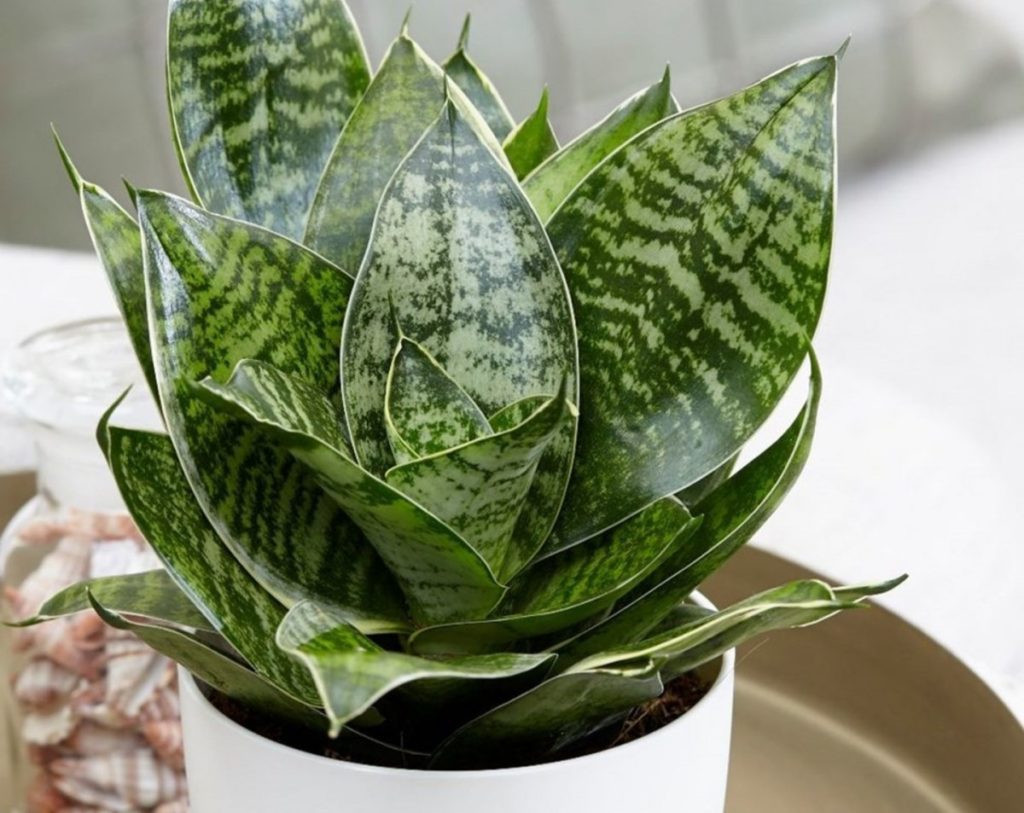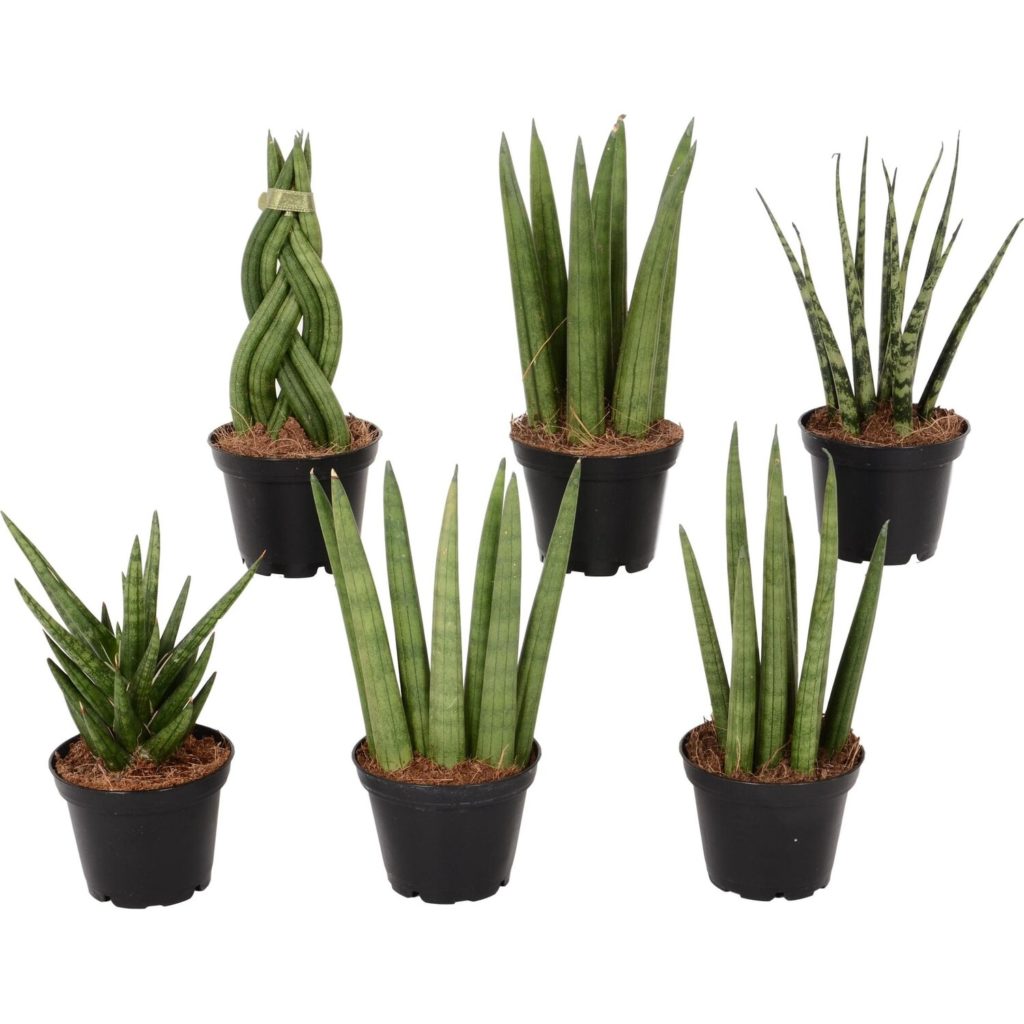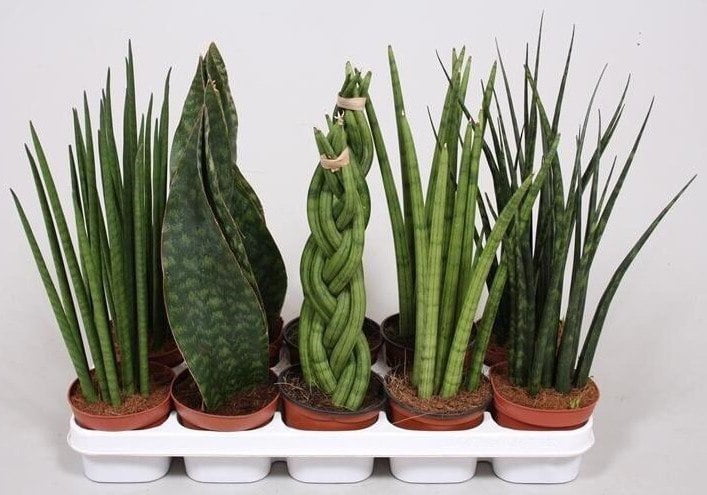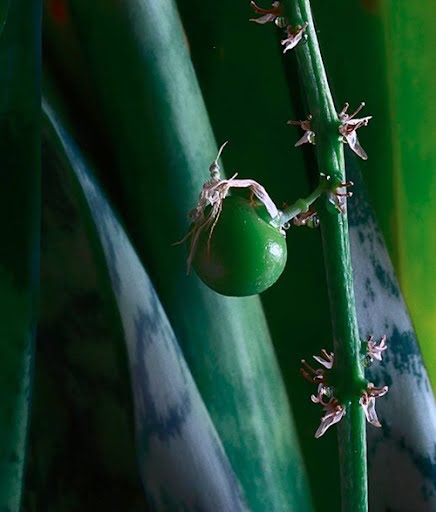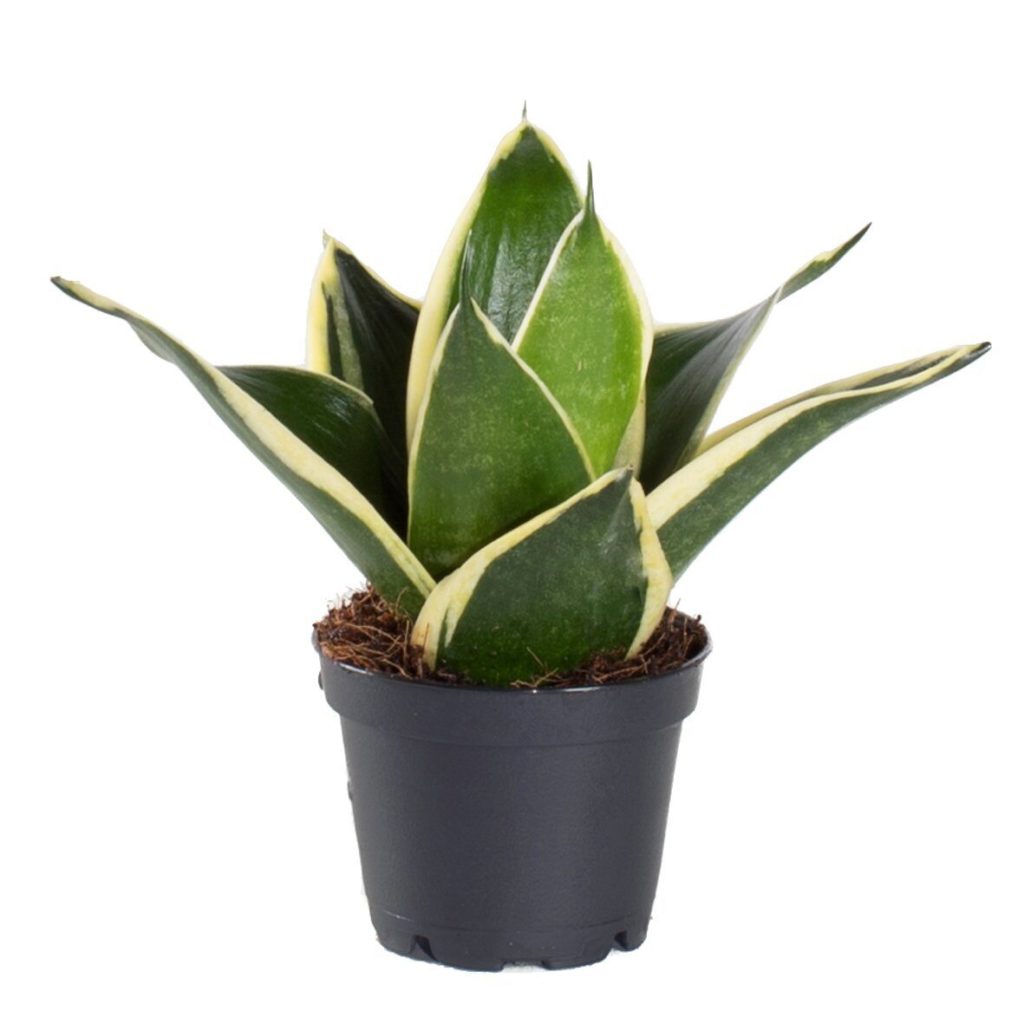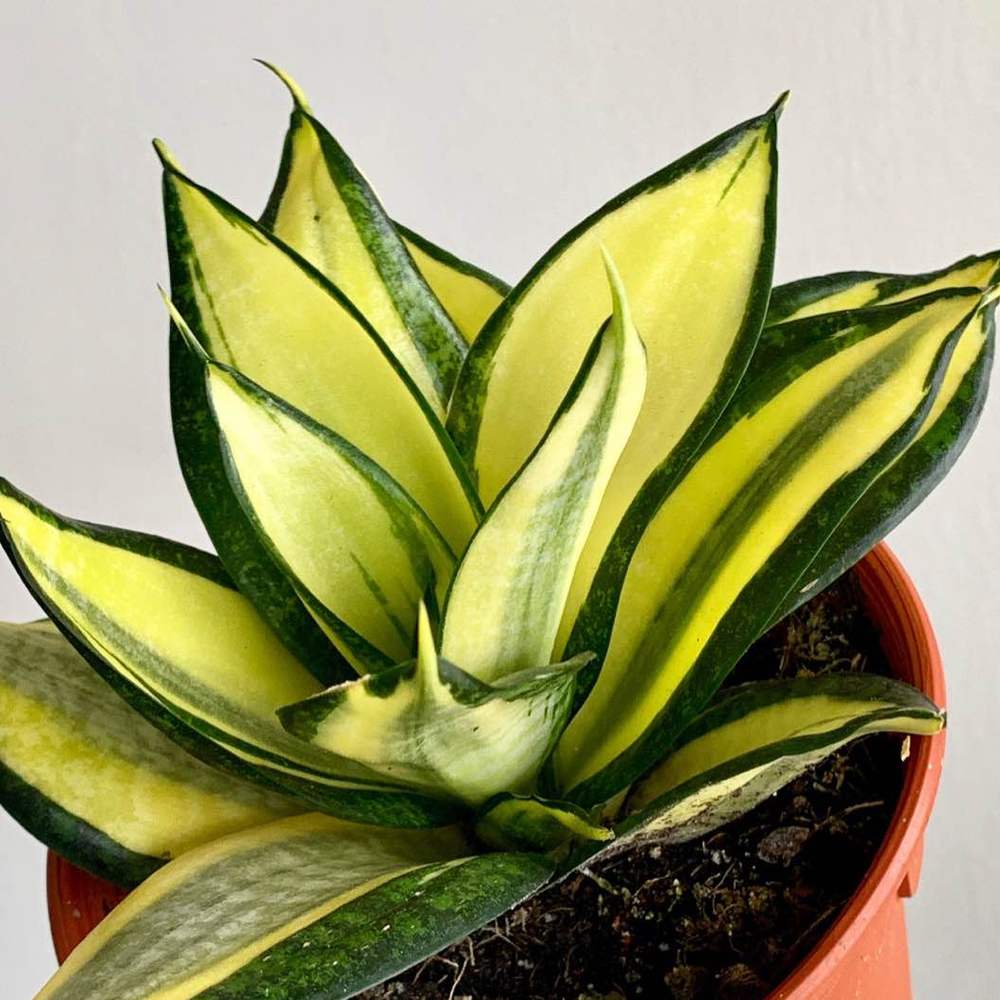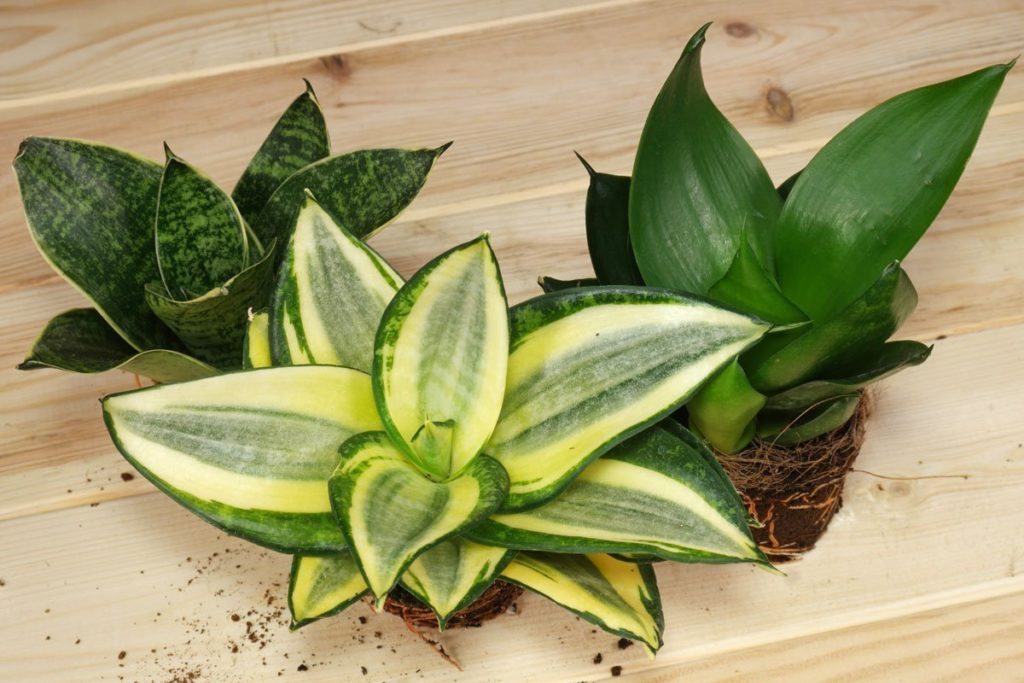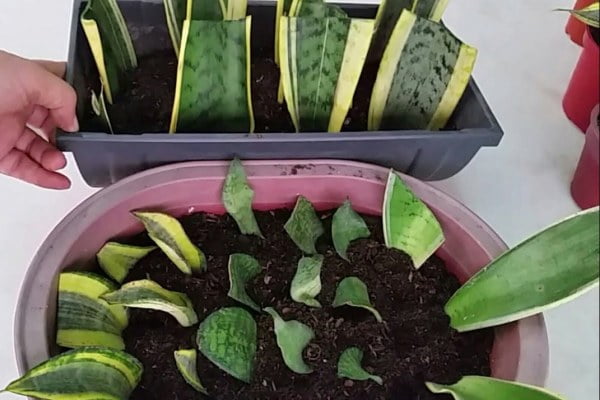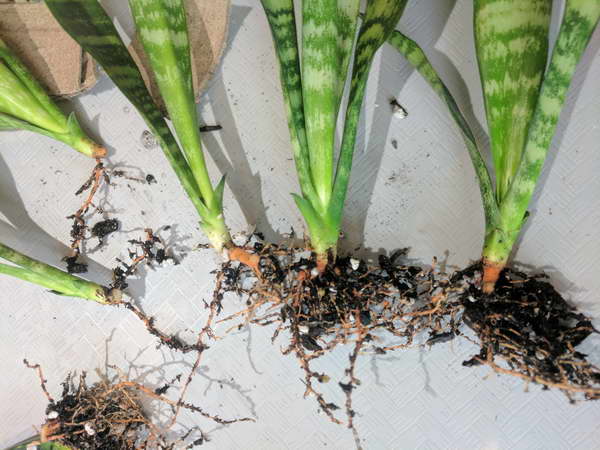Sansevieria – an undemanding plant that has been thriving in European homes for over three centuries. The distinct and elegant forms of Sansevieria make it a favored decoration in minimalist interiors of modern houses.
Description of the Sansevieria Plant
In the 18th century, an Italian botanist named Petanga brought a plant from Africa to Europe, which the local natives used for medicinal and domestic purposes.
The plant was studied, described, and included in botanical dictionaries by naturalist scientists under the name “Sansevieria.” Its scientific name is attributed to the Neapolitan prince Sansevero, who, as a patron, made a significant contribution to the development of botanical science.
The scientific description of the plant states that Sansevieria, also known as snake plant or mother-in-law’s tongue (Sansevieria), belongs to the Asparagus family (Asparagaceae) and is a perennial, evergreen plant. It comprises several hundred species and is found on all islands and continents in tropical and subtropical regions.
By the 1930s and 1940s, breeders had managed to cultivate nearly sixty varieties of Sansevieria, which continue to be in high demand among gardeners today.
The secret to the success of this plant lies in its beneficial properties. For centuries, residents of Africa and Asia have used Sansevieria as a medicinal remedy. The juice from the plant’s leaves contains antiseptic and anti-inflammatory substances that can heal wounds and burns. Infusions and decoctions made from the leaves are helpful in urinary and gallbladder diseases and are even used as diuretics, cholagogues, and abortifacients.
Research conducted in collaboration with NASA as part of the “Clean Air” project confirmed that some domesticated varieties of Sansevieria, due to their high saponin content in the leaves, are capable of purifying the air. Thus, the houseplant actively absorbs formaldehyde, carbon dioxide, and nitrogen oxide.
Sansevieria also holds practical value in African and Asian cultures. Indigenous people grow the plant to create living hedges, make woven fabric, ropes, cords, and weave baskets.
Throughout its centuries-long history, Sansevieria has acquired many nicknames in different corners of the planet. In Turkey, the flower is called the “Sword of the Pasha,” in England – “mother-in-law’s tongue” or “devil’s tongue,” in Latin American countries – “St. George’s sword,” in Russia – “pike’s tail,” in the United States – “snake plant,” and in Asia, it is dubbed the “tiger’s tail.”
Due to the diversity of species, it is challenging to provide a general description of Sansevieria, so they are typically divided into two groups based on the shape of their leaves.
One group consists of plants with a rosette of short but wide leaf blades, while the second group includes all species with narrow and elongated leaves.
The natural color of the leaves is a dark green shade. Cultivated varieties offer a wide range of colors. Leaves grow directly from the rhizome and produce annual growth in the form of several plates.
During the warm season, the period of vegetation begins, and Sansevieria produces flower stalks. The buds are arranged in clusters. The flowers are small, star-shaped, and emit a strong vanilla fragrance.
In natural conditions, flowering concludes with the formation of berry-like fruits containing seeds.
Domestic Varieties and Cultivars with Photos
Sansevieria Grandis
The leaf blades of Sansevieria Grandis reach a length of sixty centimeters. The rosette typically consists of no more than four leaves. The leaves have the shape of elongated arrows and are green in color. The surfaces of both the outer and inner sides of the leaves are covered with a random pattern of brighter emerald-colored stripes and spots, creating a vibrant pattern. The leaf blades are outlined with a red border. The flowering period falls in the spring months, with pale greenish-salmon flowers.
Sansevieria Trifasciata
The leaf blades are elongated ovals, dark green in color with a striped pattern in shades of brown. The length of the leaf blade reaches one meter.
Based on this species, two of the most well-known domestic dwarf varieties have been developed:
Sansevieria Cylindrica
The long leaf blades have a cylindrical shape with very sharp tips. The leaf color is dark green with a striped pattern in shades of yellow and silver. A short flower stalk is located in the center of the rosette. The flowers resemble small stars with five petals, milky white with pale pink veins.
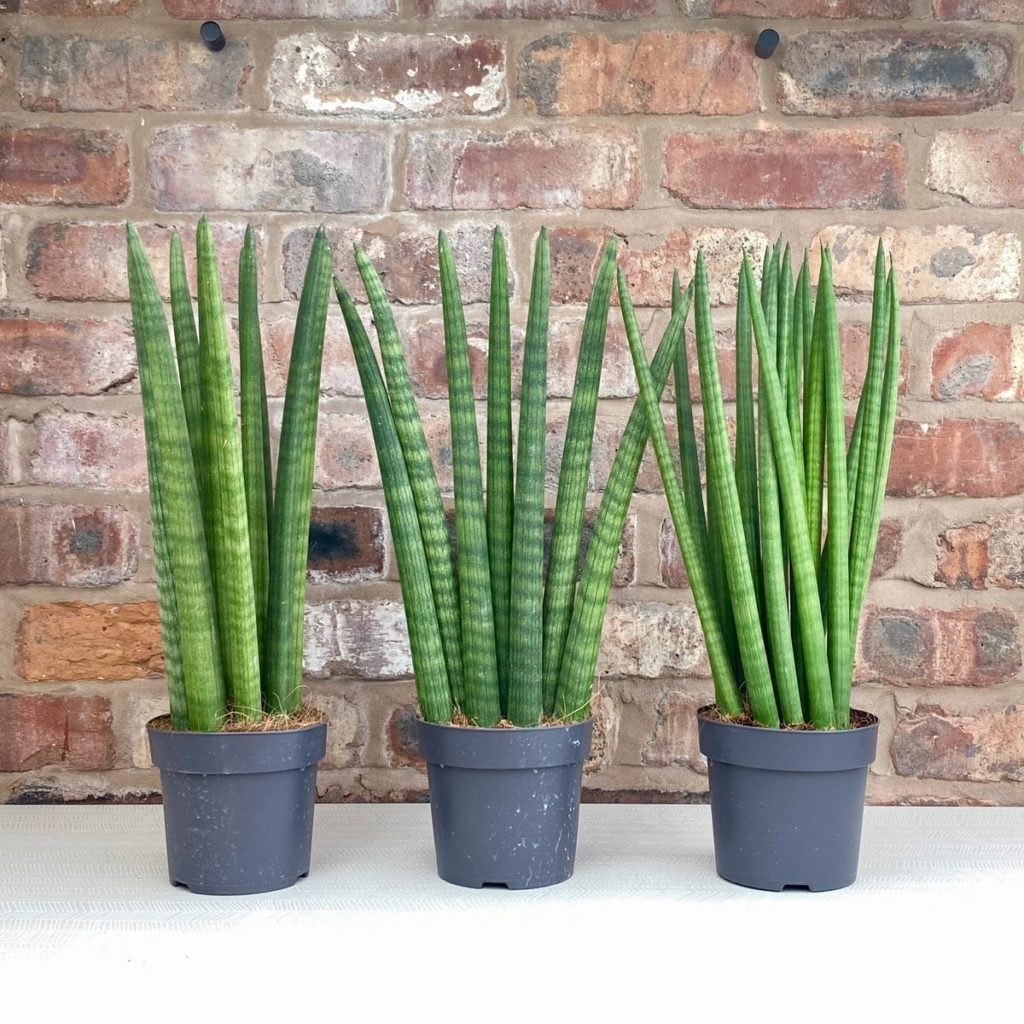
Care in Domestic Conditions
Light
Sansevieria’s vitality is not dependent on sunlight. The plant will thrive under any lighting conditions, whether it’s the light from a regular lamp or direct sunlight. Mother-in-law’s tongue is indifferent to both shade and intense midday sun. Therefore, you can place the pot with Sansevieria in any location within your home.
Temperature
Sansevieria is comfortable at temperatures ranging from 12 to 25 degrees Celsius.
Watering and Humidity
Water Sansevieria only when the soil in the pot has completely dried out. This succulent plant can go without water for an extended period, and excessive moisture in the soil can harm the plant. The lower the temperature, the less frequent watering is required.
Sansevieria is not particular about humidity levels. Occasionally, you should wipe its leaves with a slightly damp sponge to remove dust.
Soil
Ready-made mix: cactus or succulent soil.
Homemade mix: loam, leafy soil, sand (1:1:1). A drainage layer made of expanded clay or other natural materials is essential.
Fertilization
For Sansevieria, fertilizers designed for cacti and succulents are suitable, but they should be used at less than half the manufacturer’s recommended dosage. Fertilization should only occur during the growth period, which is from late spring to mid-autumn.
Repotting
Sansevieria has a very compact, slow-growing root system, so the plant can remain in the same pot for decades.
Propagation of Sansevieria. Methods
By Cuttings
To obtain cuttings, select a large and fleshy leaf from the rosette, and cut it off at the very base. Use a blade or a utility knife to divide the leaf blade into several parts. These parts are the cuttings.
Let the cuttings air-dry for several hours, then insert them vertically into damp sand. Each cutting should be placed under a transparent cover, which can be any container or plastic bottle.
Place the container with the cuttings on a tray and provide them with a small amount of water. The temperature for propagation should be stable within the range of 23-25 degrees Celsius. Cuttings will root in about 2 months, and the formation of rosettes and the first leaves will start no earlier than 6 months.
However, when propagating by cuttings, varietal characteristics are usually lost, such as bright edging and variegated patterns. The new plants will have a typical species appearance.
By Division
If you use this method, all varietal qualities will remain unchanged. However, this method can only be used if the Sansevieria plant is mature and has grown significantly. In this case, it requires repotting. Remove the plant from the pot and carefully clean the root system from the soil (do not wash it!!!). Use a blade to divide the roots and the rosette in such a way that 2-3 leaf blades are preserved.
Each new plant is planted in a separate container with a slightly damp mixture of peat and sand. The separated part of Sansevieria is hardly watered for about 30 days and should be kept at a temperature of 25 degrees Celsius, which is ideal for the plant.
Diseases and Pests
Sansevieria has a strong immune system, and it is not susceptible to any diseases. The only thing that can trigger its illness is excess moisture caused by overwatering. In this case, the roots may start to rot, and the plant will need to be discarded.
Harmful insects completely ignore Sansevieria because they cannot pierce its leaf blades. Even if a pot of this plant is in close proximity to infested plants with aphids, thrips, or other parasites, they will never transfer to Sansevieria.
Read our special article about all popular house flowers and plants Indoor Plants: Names and Photos with Descriptions.
